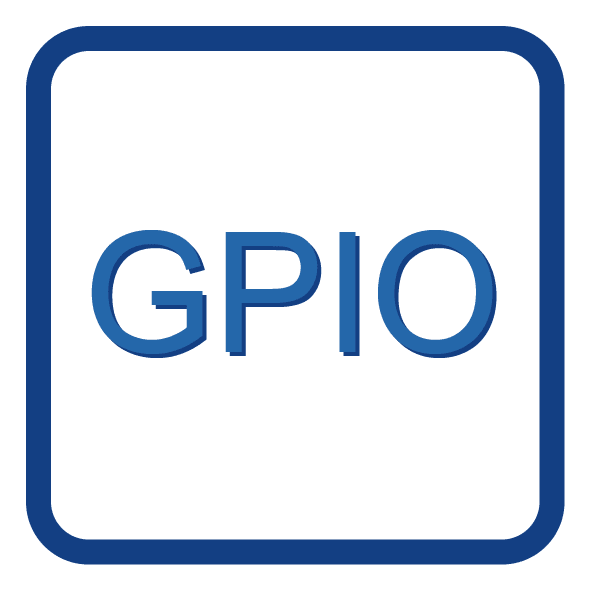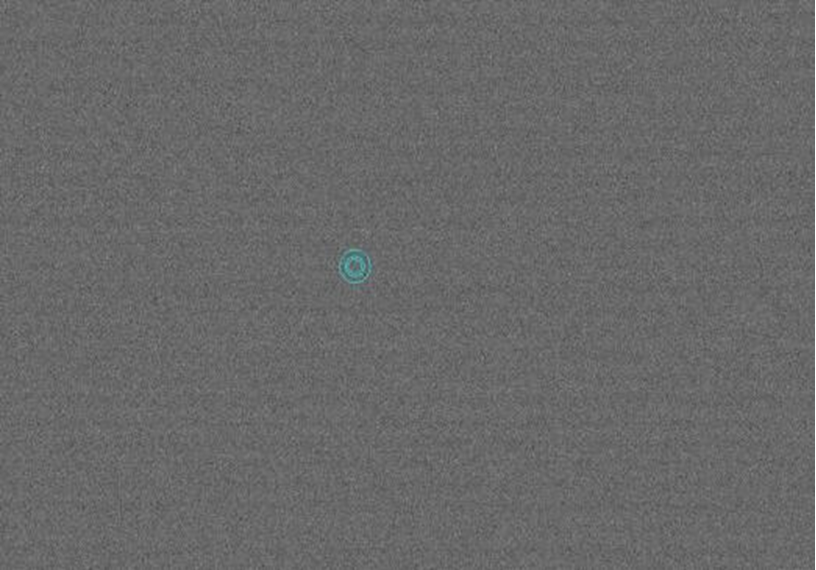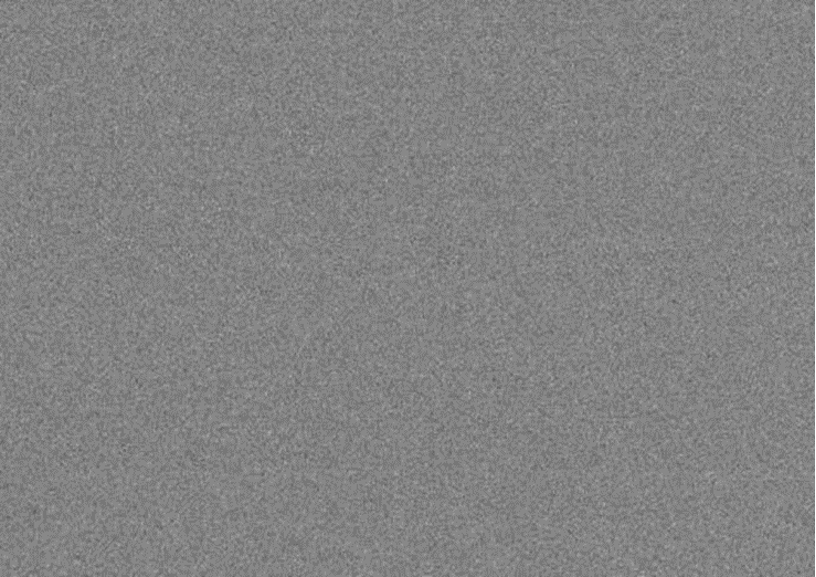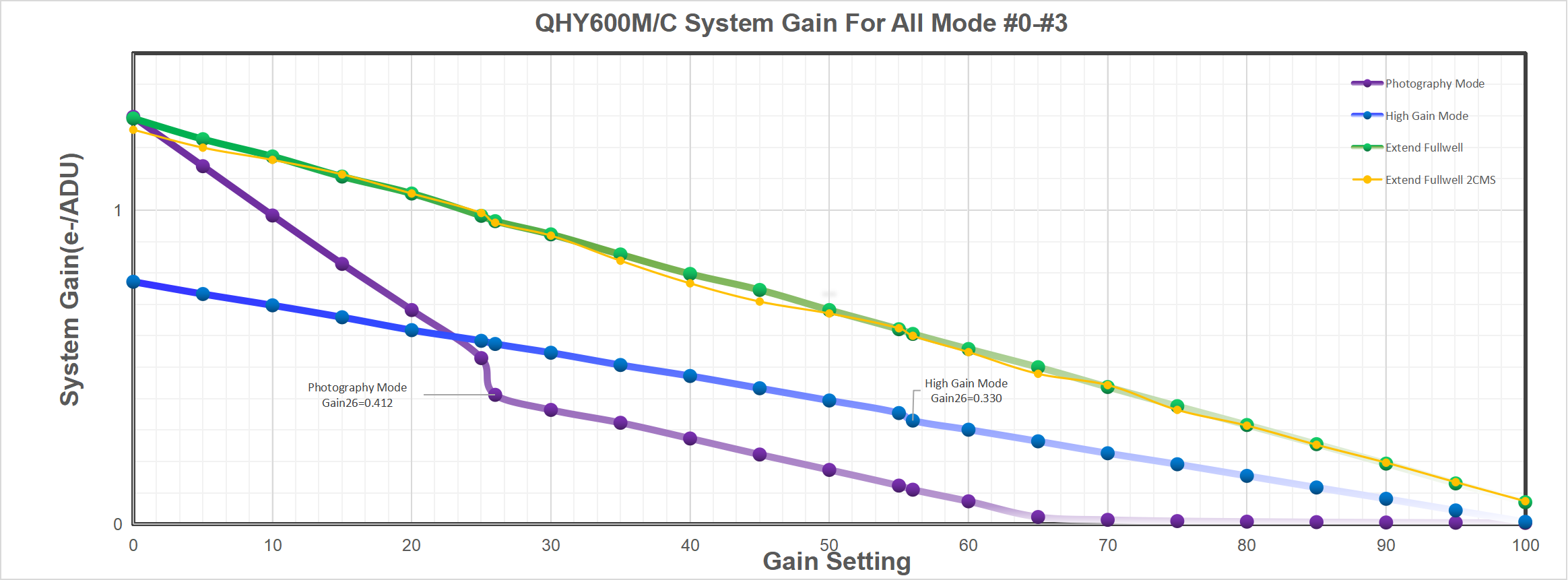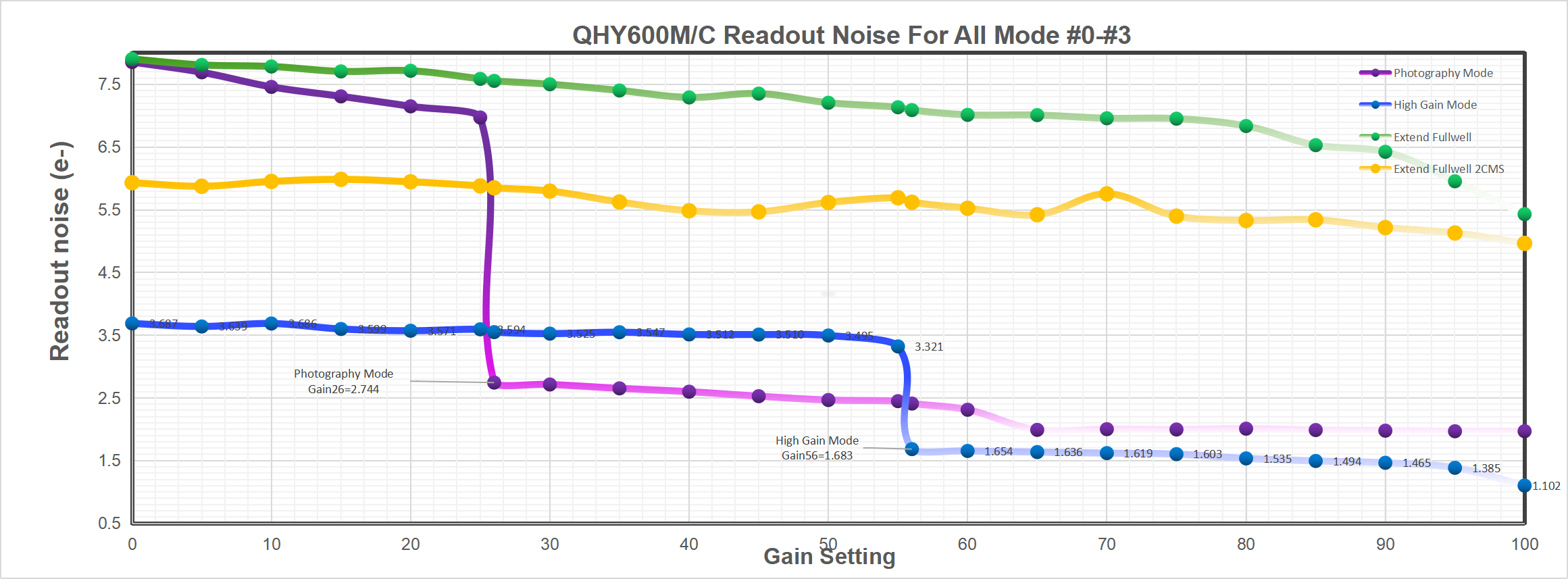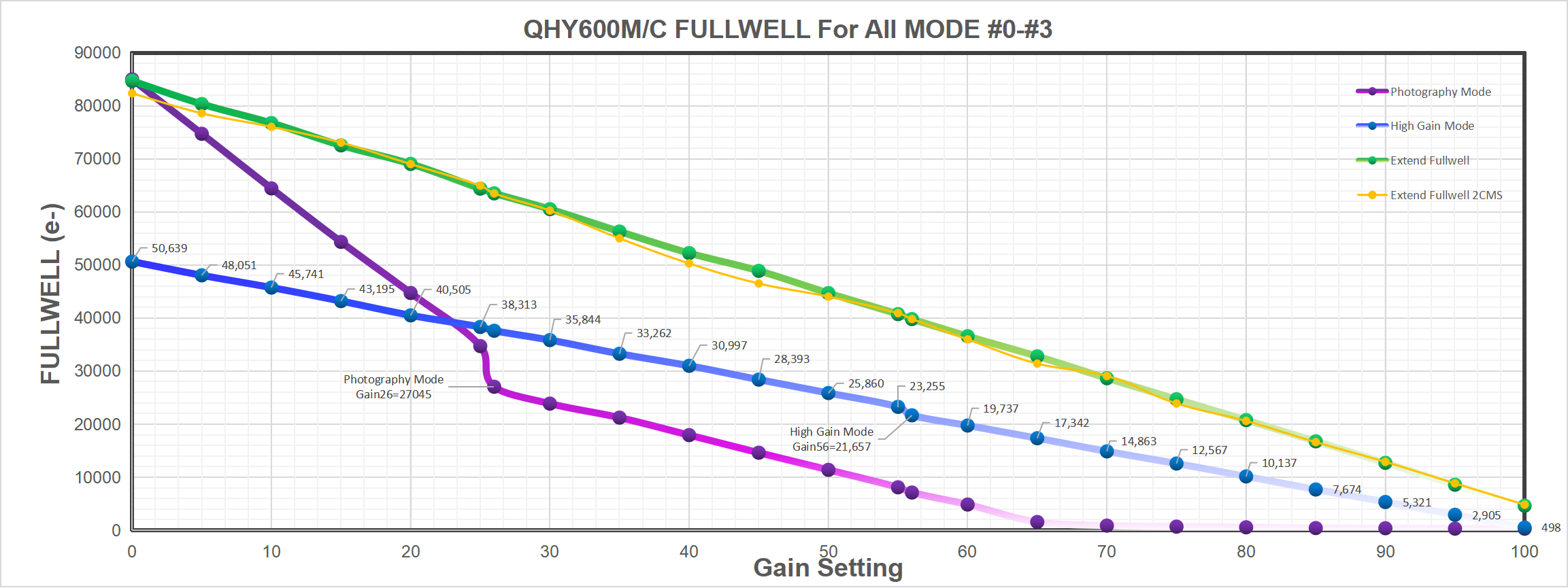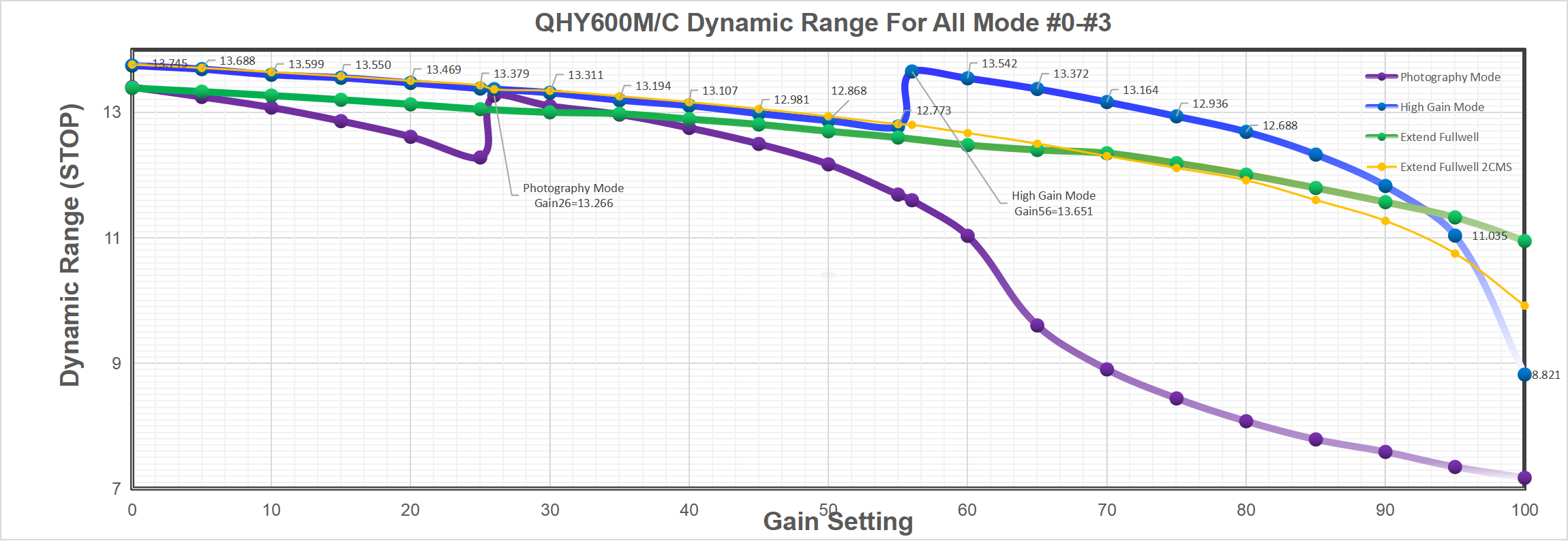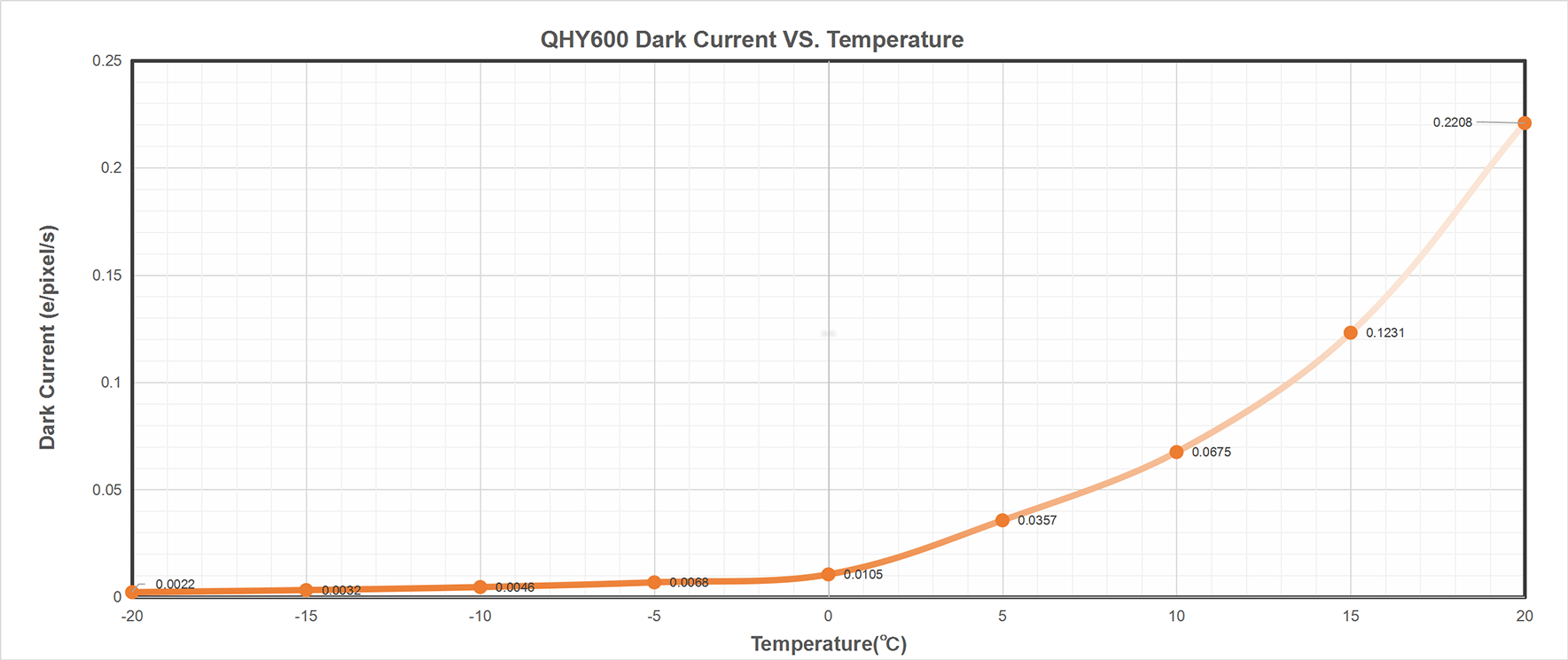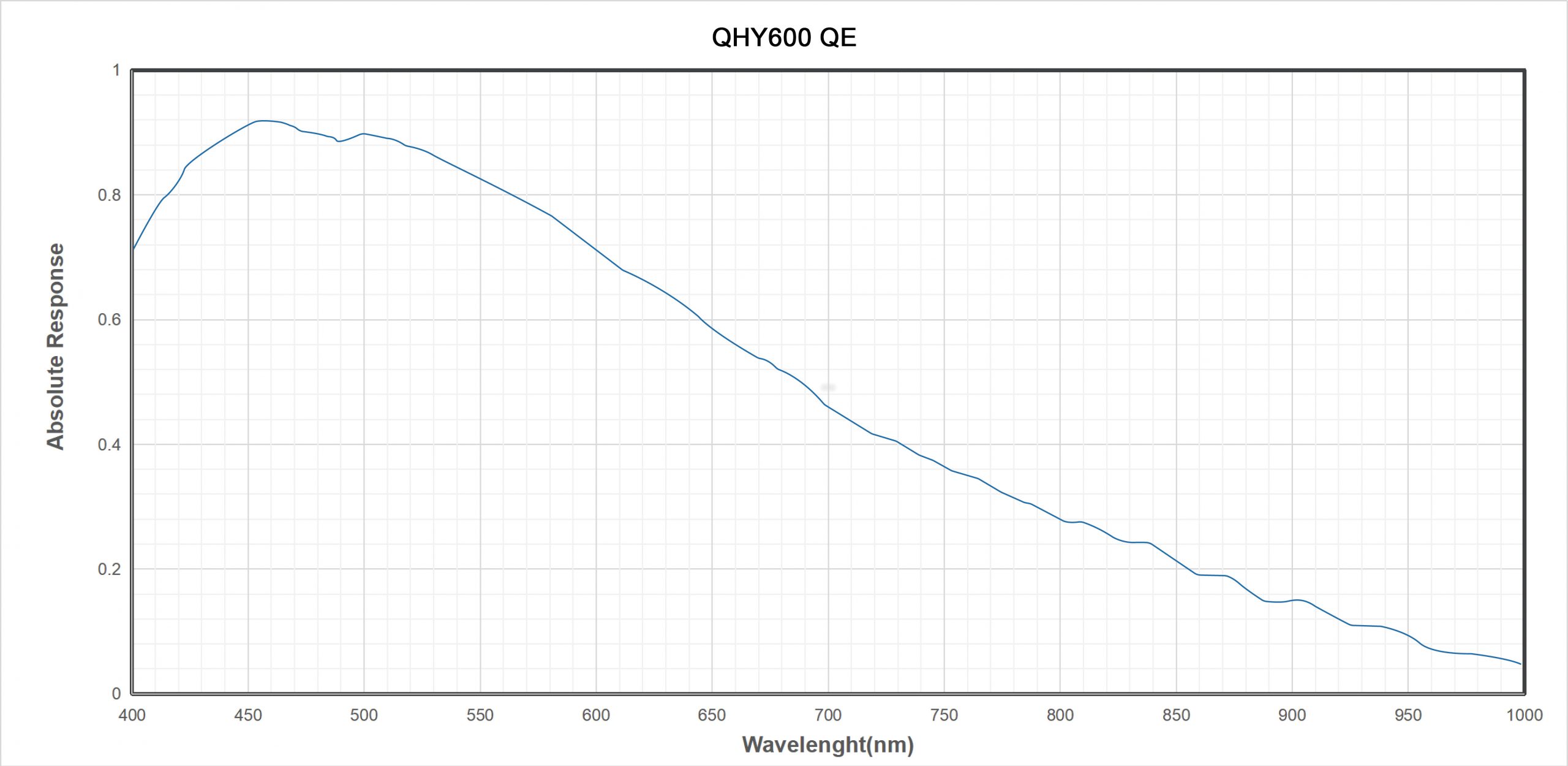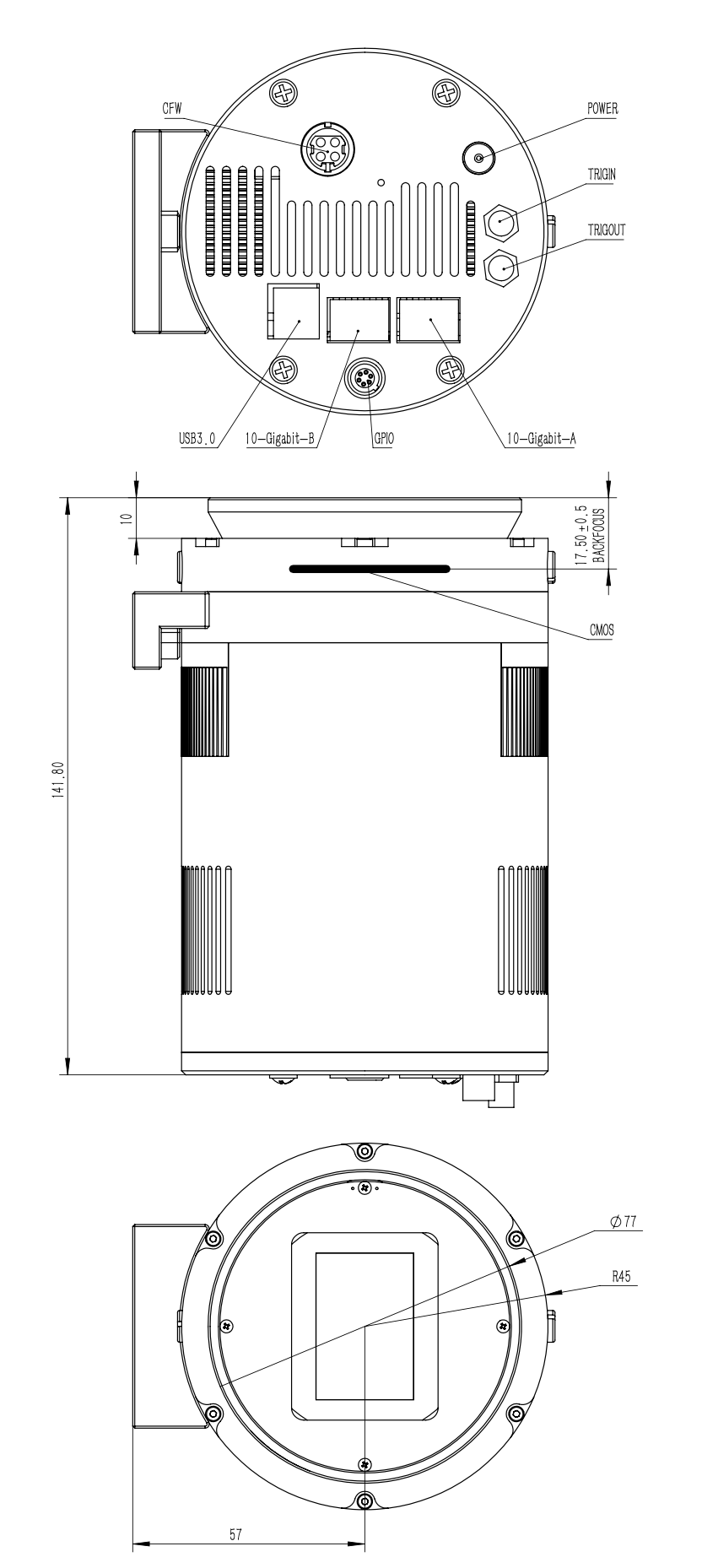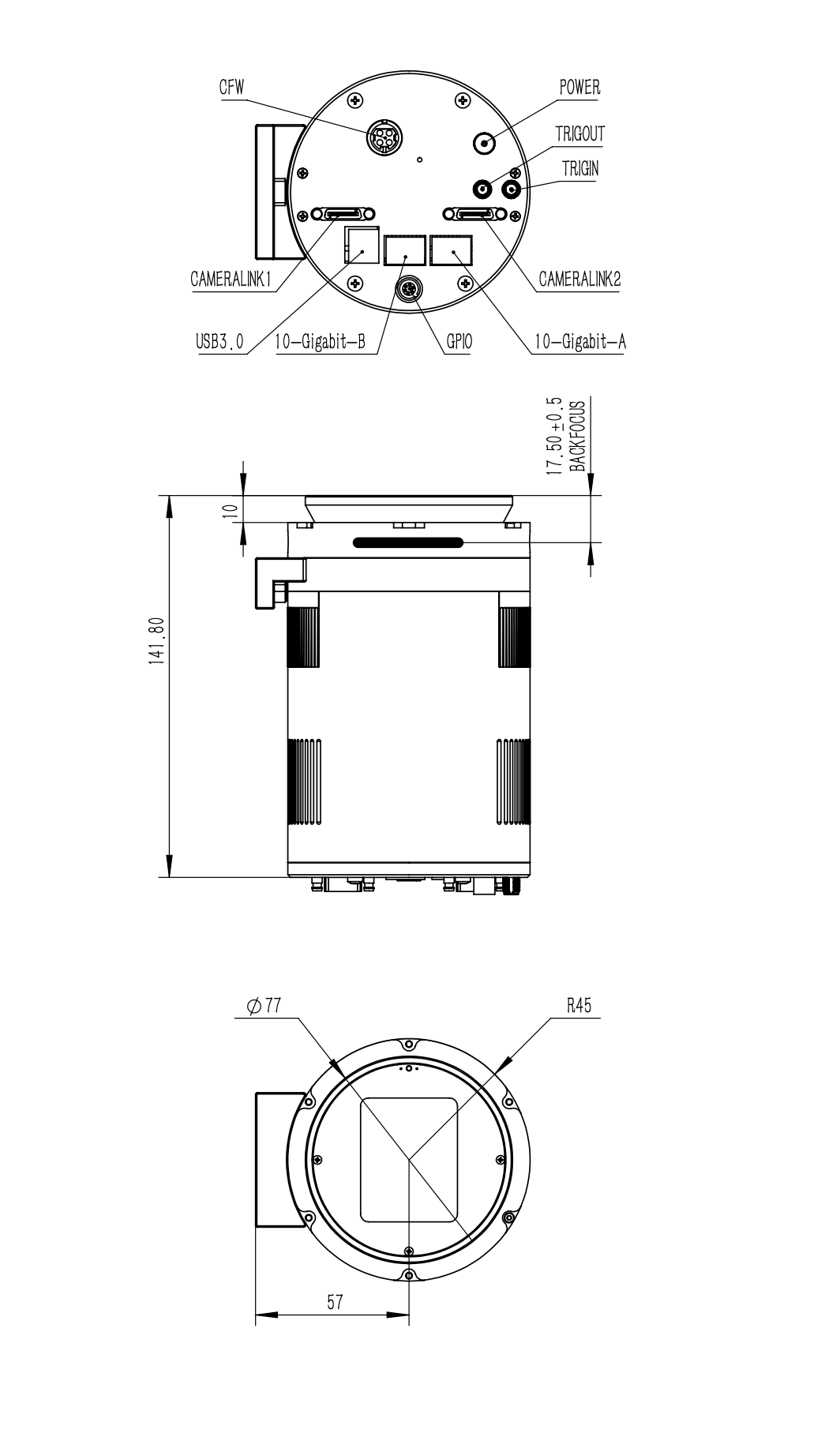The QHY600PRO Series uses the latest SONY back-illuminated sensor, the IMX455, a full-frame (35mm format) sensor with 3.76um pixels and native 16-bit A/D. This sensor is available in monochrome and color versions. Specially designed for scientific applications, including the 2*10Gbps fiber interface, USB3.0 interface, 2GB DDR3 memory, 6PIN GPIO/Trig/GPS connector. Support 4.0FPS 16bit full-frame readout and 10FPS 14bit full-frame readout.
Typical Applications
Sky Survey, Astronomical Photometric, high-resolution LCD/OLED screen inspector/color calibration. All-sky camera. Scientific Measurement, DNA sequencer, Spectrum Instrument.
*Please contact QHYCCD about the price.
*PCIE Card Kit is NOT included in the QHY600Pro product.
QHY600PRO has a back-illuminated structure technology, QE is up to 90%. It has a very low readout noise performance, it can get 1.1e- at the highest gain. It has a typical 51ke full-well in high gain readout mode and a typical 80ke readout in extending full-well mode. The camera supports the 2-cms readout mode (sample the same signal twice and averaged on the sensor) and it can get the readout noise 1.3times less than normal readout mode.
QHY600PRO has two data interfaces: USB3.0 interface and 2*10Gbps fiber interface. With 2*10Gbps fiber interface, it can get 4FPS @ 16bit full resolution and 10FPS @ 14bit full resolution frame rate under live streaming mode. The QHY600PRO also supports the Trig in/out function and GPS function.
QHY600PRO has an extremely good linear response in the whole full-well range. Please check the following document of the QHY600 Linear Test. It also has zero amplifier glow and zero RBI remains performance.
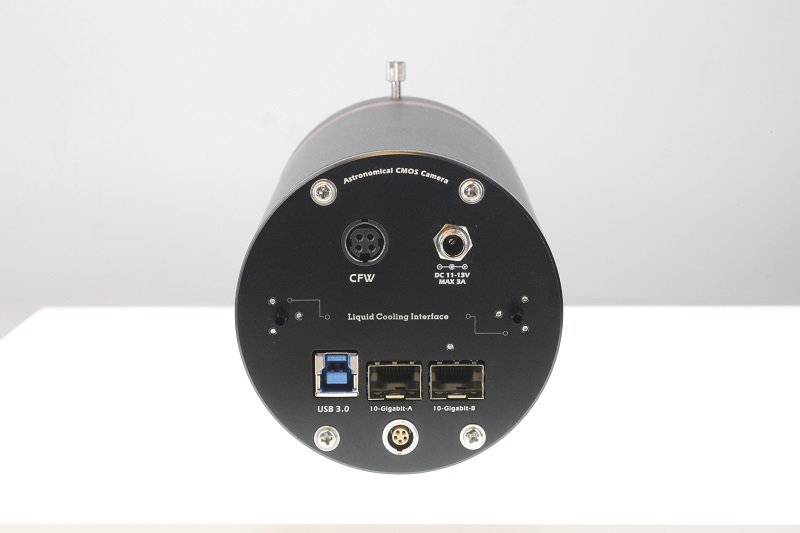
QHY600Pro has a Short Back Focal Length version (QHY600SBFL) is specially designed for DSLR lens users or those who has special requirment of short back focal length. This version has a special f has 14mm B.F.L only. Futhermore, the B.F.L equals 12.5mm when connecting QHYCFW with the adapter. It can easily match Canon/Nikon lens even with filter wheel.
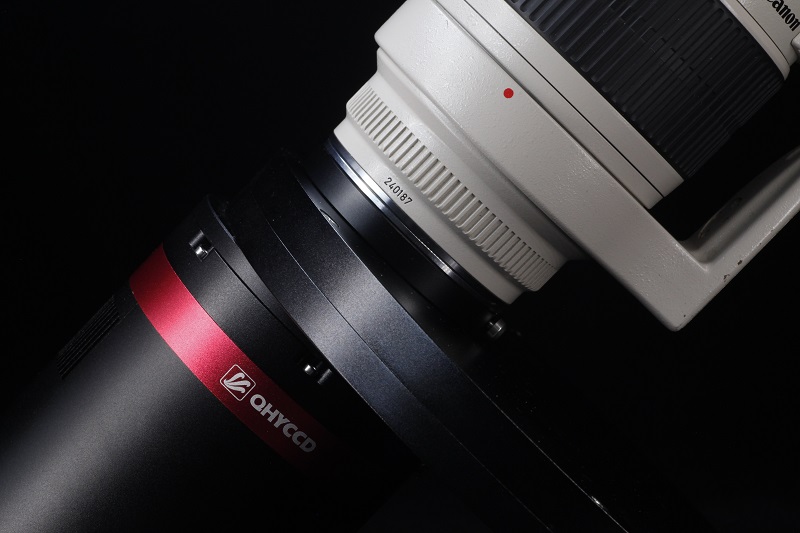
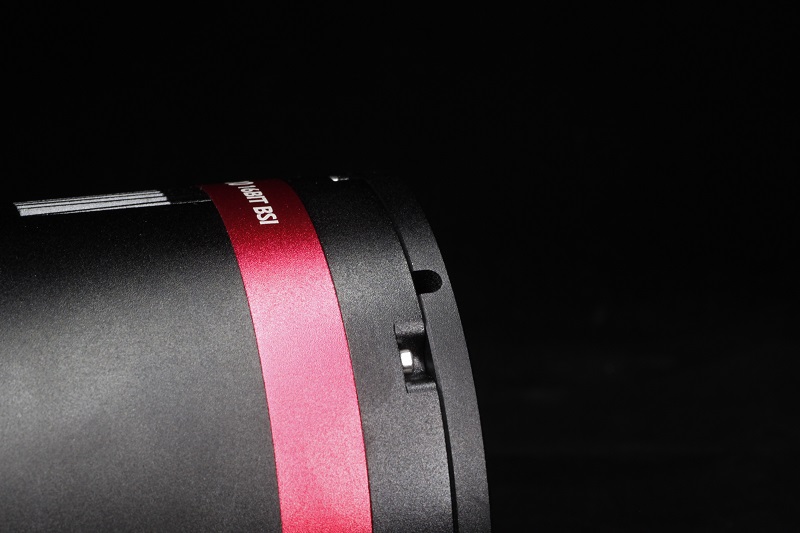
Description:
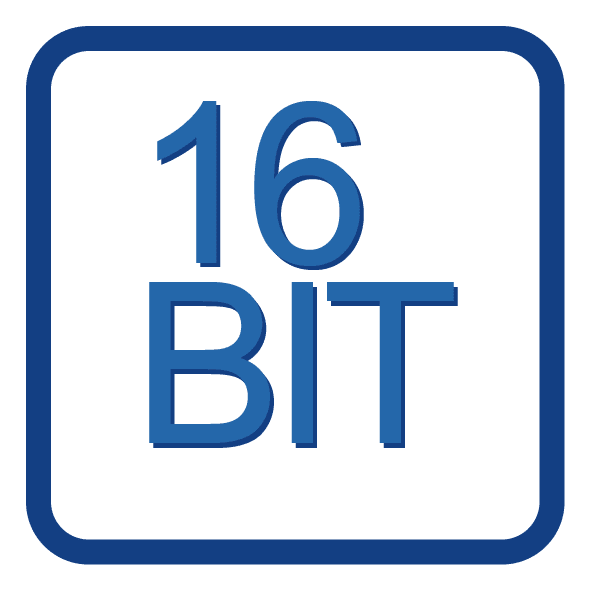 Native 16 bit A/D: The new Sony sensor has native 16-bit A/D on-chip. The output is real 16-bits with 65536 levels. Compared to 12-bit and 14-bit A/D, a 16-bit A/D yields higher sample resolution and the system gain will be less than 1e-/ADU with no sample error noise and very low read noise.
Native 16 bit A/D: The new Sony sensor has native 16-bit A/D on-chip. The output is real 16-bits with 65536 levels. Compared to 12-bit and 14-bit A/D, a 16-bit A/D yields higher sample resolution and the system gain will be less than 1e-/ADU with no sample error noise and very low read noise.
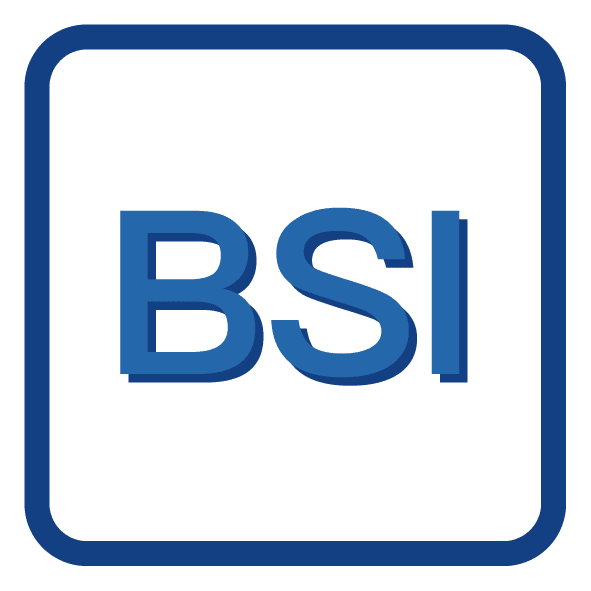 BSI: One benefit of the back-illuminated CMOS structure is improved full well capacity. This is particularly helpful for sensors with small pixels. In a typical front-illuminated sensor, photons from the target entering the photosensitive layer of the sensor must first pass through the metal wiring that is embedded just above the photosensitive layer. The wiring structure reflects some of the photons and reduces the efficiency of the sensor. In the back- illuminated sensor the light is allowed to enter the photosensitive surface from the reverse side. In this case the sensor’s embedded wiring structure is below the photosensitive layer. As a result, more incoming photons strike the photosensitive layer and more electrons are generated and captured in the pixel well. This ratio of photon to electron production is called quantum efficiency. The higher the quantum efficiency the more efficient the sensor is at converting photons to electrons and hence the more sensitive the sensor is to capturing an image of something dim.
BSI: One benefit of the back-illuminated CMOS structure is improved full well capacity. This is particularly helpful for sensors with small pixels. In a typical front-illuminated sensor, photons from the target entering the photosensitive layer of the sensor must first pass through the metal wiring that is embedded just above the photosensitive layer. The wiring structure reflects some of the photons and reduces the efficiency of the sensor. In the back- illuminated sensor the light is allowed to enter the photosensitive surface from the reverse side. In this case the sensor’s embedded wiring structure is below the photosensitive layer. As a result, more incoming photons strike the photosensitive layer and more electrons are generated and captured in the pixel well. This ratio of photon to electron production is called quantum efficiency. The higher the quantum efficiency the more efficient the sensor is at converting photons to electrons and hence the more sensitive the sensor is to capturing an image of something dim.
 Zero Amplify Glow: This is also a zero amplifer glow camera.
Zero Amplify Glow: This is also a zero amplifer glow camera.
 TRUE RAW Data: In the DSLR implementation there is a RAW image output, but typically it is not completely RAW. Some evidence of noise reduction and hot pixel removal is still visible on close inspection. This can have a negative effect on the image for astronomy such as the “star eater” effect. However, QHY Cameras offer TRUE RAW IMAGE OUTPUT and produces an image comprised of the original signal only, thereby maintaining the maximum flexibility for post-acquisition astronomical image processing programs and other scientific imaging applications.
TRUE RAW Data: In the DSLR implementation there is a RAW image output, but typically it is not completely RAW. Some evidence of noise reduction and hot pixel removal is still visible on close inspection. This can have a negative effect on the image for astronomy such as the “star eater” effect. However, QHY Cameras offer TRUE RAW IMAGE OUTPUT and produces an image comprised of the original signal only, thereby maintaining the maximum flexibility for post-acquisition astronomical image processing programs and other scientific imaging applications.
 Anti-Dew Technology: Based on almost 20-year cooled camera design experience, The QHY cooled camera has implemented the fully dew control solutions. The optic window has built-in dew heater and the chamber is protected from internal humidity condensation. An electric heating board for the chamber window can prevent the formation of dew and the sensor itself is kept dry with our silicon gel tube socket design for control of humidity within the sensor chamber.
Anti-Dew Technology: Based on almost 20-year cooled camera design experience, The QHY cooled camera has implemented the fully dew control solutions. The optic window has built-in dew heater and the chamber is protected from internal humidity condensation. An electric heating board for the chamber window can prevent the formation of dew and the sensor itself is kept dry with our silicon gel tube socket design for control of humidity within the sensor chamber.
 Cooling: In addition to dual stage TE cooling, QHYCCD implements proprietary technology in hardware to control the dark current noise.
Cooling: In addition to dual stage TE cooling, QHYCCD implements proprietary technology in hardware to control the dark current noise.
 The 2*10Gigabit Fiber Optic Interface (to be used with QHYCCD fiber optic capture card) meets the high-intensity data transmission requirements of professional fields such as professional observatories. It has the following advantages over the USB 3.0 interface:
The 2*10Gigabit Fiber Optic Interface (to be used with QHYCCD fiber optic capture card) meets the high-intensity data transmission requirements of professional fields such as professional observatories. It has the following advantages over the USB 3.0 interface:
Higher data rates
Using two 10G fiber optics, it can achieve a speed of 1.6GBytes/s, while the standard USB 3.0 has a rate of 5Gbps, with an actual maximum transfer rate of 350MBytes/s.
Longer transmission distance
Fiber optic transmission can cover distances hundreds of times longer than USB 3.0. Standard USB 3.0 can only transmit up to 3 to 5 meters, and even with an active powered USB cable, it can reach up to 10 to 15 meters. In contrast, QHYCCD’s standard fiber optic module can achieve a transmission distance of up to 300 meters, and when paired with long-distance transmission optical modules, it can cover distances of several tens of kilometers.
Stable transmission without electromagnetic interference
USB 3.0 transmission can be susceptible to external electromagnetic interference, static electricity, leakage, and other factors, leading to data packet corruption, image loss, or camera control issues. Optical communication is not affected by electromagnetic interference.
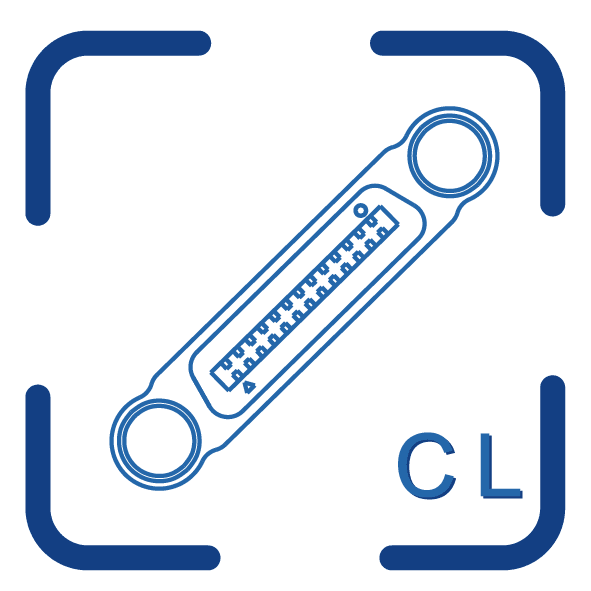 Supports the professional Camera Link interface (exclusive to Pro II products)
Supports the professional Camera Link interface (exclusive to Pro II products)
The Camera Link interface is a more suitable choice if your use case involves shorter transmission distances in industrial or laboratory areas. The Camera Link interface is specifically designed for high-speed and high-resolution cameras, offering fast data transmission speeds. It is well-suited for working under conditions where there is a large amount of image data and high bandwidth requirements.
 This product supports custom water cooling. If you have water cooling customization requirements, please contact the QHYCCD sales department.
This product supports custom water cooling. If you have water cooling customization requirements, please contact the QHYCCD sales department.
Compared to air cooling, water cooling offers the following advantages:
More efficient cooling. When using ambient temperature pure water for water cooling, the maximum cooling temperature is about 10 degrees Celsius lower than that of air cooling. QHYCCD is improving its support for ultra-low temperature liquid cooling.
No vibration. No matter how high-quality the fan is, it is inevitable to generate some image jitter. The water-cooling version does not have moving mechanical parts that cause camera vibration, thus avoiding negative effects on the image.
No turbulent hot air. For certain cameras that need to be installed in front of the optical system, such as Schmidt-Cassegrain telescopes, the hot air generated by air cooling systems may cause slight interference with the optical path. Water cooling does not produce this kind of impact.
Multiple Readout Modes are special for QHY 16-bit Cameras (QHY600/268/461/411). Different readout modes have different driver timing, etc., and result in different performance. See details at “Multiple Readout Modes and Curves” Part.
You may find some types of thermal noise can change with time in some back-illuminated CMOS cameras. This thermal noises has the characteristic of the fixed position of typical thermal noise, but the value is not related to the exposure time. Instead, each frame appears to have its own characteristics. The QHY600/268/461/411 use an innovative suppression technology that can significantly reduce the apparent level of such noise.
UVLO(Under Voltage Locking) is to protect the electronic device from damage caused by abnormally low voltages.
Our daily life experience tells us that the actual operational voltage of an electrical device must not significantly exceed the rated voltage, otherwise it will be damaged. For such precision equipment as cameras, long-term work at too low input voltage can also be detrimental to the working life of the camera, and may even make some devices, such as power manager, burn up due to long-term overload. In the all-in-one driver and SDK after 2021.10.23 stable version, the camera will give a warning when the input voltage of the camera is below 11V.
It is common behavior for a CMOS sensor to contain some horizontal banding. Normally, random horizontal banding can be removed with multiple frame stacking so it does not affect the final image. However, periodic horizontal banding is not removed with stacking so it may appear in the final image. By adjust the USB traffic in Single Frame mode or Live Frame mode, you can adjust the frequency of the CMOS sensor driver and it can optimize the horizontal banding appeared on the image. This optimized is very effective to remove the periodic banding in some conditions.
A typical Periodic Horizontal Noise under certain USB_TRAFFIC values.
After Adjusting the USB Traffic to avoid the periodic horizontal noise.
The camera is designed to use the +12V to reboot the camera without disconnecting and reconnecting the USB interface. This means that you can reboot the camera simply by shutting down the +12V and then powering it back on. This feature is very handy for remote controlling the camera in an observatory. You can use a remotely controlled power supply to reboot the camera. There is no need to consider how to reconnect the USB in the case of remote control.
Multiple Readout Modes are special for QHY 16-bit Cameras (QHY600/268/461/411). Different readout modes result in different performance. These readout modes are currently supported in the QHYCCD ASCOM Camera Driver, SharpCap and N.I.N.A.
Readout Mode #0 (Photographic DSO Mode). This mode is suitable for most DSO imaging situations. Since there is a drop in the noise between Gain 25 and Gain 26 (unity gain), we recommend it as default gain setting; however, gain0 is also good enough for a 16-bit sensor.
Readout Mode #1 (High Gain Mode). This mode is something like double native iso of some new digital cameras, whose danamic range can greatly incerase at the vary high iso value, like iso800, iso3200, etc. The high gain mode provide such improvement for QHYCCD 16bit cameras. We recommend you choose this mode when you have to capture at high gain, for example, a vary dark object. Please note the switch point of HGC/LGC of QHY600/268/461 is 56. That means you must set Gain 56 to make the best of it.
Readout Mode#2 (Extended Fullwell Mode). With a pixel size of 3.76um, these sensors already have an impressive full well capacity of 51ke. Nevertheless, QHYCCD has implemented a unique approach to achieve a full well capacity higher than 51ke- through innovative user controllable read mode settings. In Extended Fullwell Mode, the QHY600 can achieve an extremely large full-well charge value of nearly 80ke- and the QHY268 can achieve nearly 75ke-. Greater full-well capacity provides greater dynamic range and large variations in magnitude of brightness are less likely to saturate.
Mode-2CMS
Based on the three basic modes above, 2CMS mode can greatly reduce readout noise by secondary sampling while keeping the same full well value and system gain. We prefer 2CMS modes than basic modes in astrophotography. By the way, the recommend gain values are the same as their basic modes.
Currently QHY600 and QHY461 Series support Extended Fullwell Mode-2CMS (Mode#3), and QHY268 Series support Photographic DSO Mode-2CMS (Mode#4) and High Gain Mode-2CMS (Mode#5). Mode#4 and Mode#5 require Allinone version 20230412 or higher.
Specifications
| Model | QHY600Pro I QHY600Pro II |
| CMOS Sensor | SONY IMX455 BSI CMOS Sensor |
| Mono/Color | Both Available |
| Pixel Size | 3.76um |
| Effective Pixel Area | 9576*6388(9600*6422 with overscan and optically black area) |
| Number of Effective Pixels | 61.17MP |
| Sensor Size | Full Frame (36mm*24mm) |
| A/D Sample Depth | Native 16-bit (0-65535 greyscale) A/D 18-bit at 2X2, 19-bit at 3X3, 20-bit at 4X4 software binning*QHY600 uses the software digital binning for 2*2binning. With digital sum, 2*2binning will be four 16-bit summed then it is 18-bit. |
| Full Well Capacity (1×1, 2×2, 3×3) | Photographic Mode >51ke- / >204ke- / >408ke- Extended Full Well Mode >80ke- / >320ke- / >720ke- |
| Full Resolution Frame Rate (USB3.0 Port) | 4.0FPS@8BIT 2.5FPS@16BIT |
| ROI Frame Rate (USB3.0 Port) | 2048lines, 12FPS@8BIT, 7.5FPS@16BIT 1080lines, 22.5FPS@8BIT, 14FPS@16BIT 768lines, 31.5FPS@8BIT, 19.5FPS@16BIT 480lines, 47FPS@8BIT, 30FPS@16BIT |
| Readout Noise | Photography DSO Mode:1.9e- to 7.8e-(Gain0-100) High Gain Mode:1.1e- to 3.6e-(Gain0-100) Extend Fullwell Mode:5.4e- to 7.9e-(Gain0-100) Extend Fullwell Mode-2CMS:4.9e- to 5.9e-(Gain0-100) |
| Dark Current | 0.0022e-/p/s @ -20℃ 0.0046e-/p/s @ -10℃ |
| Exposure Time Range | 40us – 3600sec |
| Amp Control | Zero Amplifer Glow |
| Shutter Type | Electric Rolling Shutter |
| Computer Interface | 1*USB3.0 Interface 2*10Gigabit Fiber Interfaces 2*CameraLink Interfaces (Pro II Version Only) |
| Built-in Image Buffer | 2GB DDR3 Memory Buffer |
| Air Cooling System | Dual Stage TEC cooler: – Long exposures (> 1 second) typically -35C below ambient – Short exposure (< 1second) high FPS, typically -30C below ambient(Test temperature +20°) |
| Optic Window Type | AR+AR High Quality Multi-Layer Anti-Reflection Coating |
| Anti-Dew Heater | Yes |
| Telescope/Lenses Interface | Support 2-inch, M54, M48, Nikon/Canon DSLR Lens, etc. (Combined with adapters ) |
| Filter Wheel Interface | 4PIN QHYCCD CFW Port |
| Back Focal Length | 17.5mm (±0.2) |
| Recommended Gain Setting | 25 (Unity Gain, Extended Full Well Mode/Photographic Mode) 56 (High Gain Mode) |
| Weigth | About 1000g |
| Firmware/FPGA remote Upgrade | Supported. Via Camera USB Port |
| Water Cooling Version (Optional) | -45℃ below ambient with water in long exposures; up to -60℃ below ambient with cold liquid; Recommended flow rate for water-cooled versions is 1.6ml/s. |
| Power | 40W/100% 20W/50% 13.8W/0% |
| Model | QHY600Pro I QHY600Pro II |
| CMOS Sensor | SONY IMX455 BSI CMOS Sensor |
| Mono/Color | Both Available |
| Pixel Size | 3.76um |
| Effective Pixel Area | 9576*6388(9600*6422 with overscan and optically black area) |
| Number of Effective Pixels | 61.17MP |
| Sensor Size | Full Frame (36mm*24mm) |
| A/D Sample Depth | Native 16-bit (0-65535 greyscale) A/D 18-bit at 2X2, 19-bit at 3X3, 20-bit at 4X4 software binning*QHY600 uses the software digital binning for 2*2binning. With digital sum, 2*2binning will be four 16-bit summed then it is 18-bit. |
| Full Well Capacity (1×1, 2×2, 3×3) | Photographic Mode >51ke- / >204ke- / >408ke- Extended Full Well Mode >80ke- / >320ke- / >720ke- |
| Full Resolution Frame Rate (USB3.0 Port) | 4.0FPS@8BIT 2.5FPS@16BIT |
| ROI Frame Rate (USB3.0 Port) | 2048lines, 12FPS@8BIT, 7.5FPS@16BIT 1080lines, 22.5FPS@8BIT, 14FPS@16BIT 768lines, 31.5FPS@8BIT, 19.5FPS@16BIT 480lines, 47FPS@8BIT, 30FPS@16BIT |
| Readout Noise | Photography DSO Mode:1.9e- to 7.8e-(Gain0-100) High Gain Mode:1.1e- to 3.6e-(Gain0-100) Extend Fullwell Mode:5.4e- to 7.9e-(Gain0-100) Extend Fullwell Mode-2CMS:4.9e- to 5.9e-(Gain0-100) |
| Dark Current | 0.0022e-/p/s @ -20℃ 0.0046e-/p/s @ -10℃ |
| Exposure Time Range | 40us – 3600sec |
| Amp Control | Zero Amplifer Glow |
| Shutter Type | Electric Rolling Shutter |
| Computer Interface | 1*USB3.0 Interface 2*10Gigabit Fiber Interfaces 2*CameraLink Interfaces (Pro II Version Only) |
| Built-in Image Buffer | 2GB DDR3 Memory Buffer |
| Air Cooling System | Dual Stage TEC cooler: – Long exposures (> 1 second) typically -35C below ambient – Short exposure (< 1second) high FPS, typically -30C below ambient(Test temperature +20°) |
| Optic Window Type | AR+AR High Quality Multi-Layer Anti-Reflection Coating |
| Anti-Dew Heater | Yes |
| Telescope/Lenses Interface | Support 2-inch, M54, M48, Nikon/Canon DSLR Lens, etc. (Combined with adapters ) |
| Filter Wheel Interface | 4PIN QHYCCD CFW Port |
| Back Focal Length | 17.5mm (±0.2) |
| Recommended Gain Setting | 25 (Unity Gain, Extended Full Well Mode/Photographic Mode) 56 (High Gain Mode) |
| Weigth | About 1000g |
| Firmware/FPGA remote Upgrade | Supported. Via Camera USB Port |
| Water Cooling Version (Optional) | -45℃ below ambient with water in long exposures; up to -60℃ below ambient with cold liquid; Recommended flow rate for water-cooled versions is 1.6ml/s. |
| Power | 40W/100% 20W/50% 13.8W/0% |
| Model | QHY600Pro I QHY600Pro II |
| CMOS Sensor | SONY IMX455 BSI CMOS Sensor |
| Mono/Color | Both Available |
| Pixel Size | 3.76um |
| Effective Pixel Area | 9576*6388(9600*6422 with overscan and optically black area) |
| Number of Effective Pixels | 61.17MP |
| Sensor Size | Full Frame (36mm*24mm) |
| A/D Sample Depth | Native 16-bit (0-65535 greyscale) A/D 18-bit at 2X2, 19-bit at 3X3, 20-bit at 4X4 software binning*QHY600 uses the software digital binning for 2*2binning. With digital sum, 2*2binning will be four 16-bit summed then it is 18-bit. |
| Full Well Capacity (1×1, 2×2, 3×3) | Photographic Mode >51ke- / >204ke- / >408ke- Extended Full Well Mode >80ke- / >320ke- / >720ke- |
| Full Resolution Frame Rate (USB3.0 Port) | 4.0FPS@8BIT 2.5FPS@16BIT |
| ROI Frame Rate (USB3.0 Port) | 2048lines, 12FPS@8BIT, 7.5FPS@16BIT 1080lines, 22.5FPS@8BIT, 14FPS@16BIT 768lines, 31.5FPS@8BIT, 19.5FPS@16BIT 480lines, 47FPS@8BIT, 30FPS@16BIT |
| Readout Noise | Photography DSO Mode:1.9e- to 7.8e-(Gain0-100) High Gain Mode:1.1e- to 3.6e-(Gain0-100) Extend Fullwell Mode:5.4e- to 7.9e-(Gain0-100) Extend Fullwell Mode-2CMS:4.9e- to 5.9e-(Gain0-100) |
| Dark Current | 0.0022e-/p/s @ -20℃ 0.0046e-/p/s @ -10℃ |
| Exposure Time Range | 40us – 3600sec |
| Amp Control | Zero Amplifer Glow |
| Shutter Type | Electric Rolling Shutter |
| Computer Interface | 1*USB3.0 Interface 2*10Gigabit Fiber Interfaces 2*CameraLink Interfaces (Pro II Version Only) |
| Built-in Image Buffer | 2GB DDR3 Memory Buffer |
| Air Cooling System | Dual Stage TEC cooler: – Long exposures (> 1 second) typically -35C below ambient – Short exposure (< 1second) high FPS, typically -30C below ambient(Test temperature +20°) |
| Optic Window Type | AR+AR High Quality Multi-Layer Anti-Reflection Coating |
| Anti-Dew Heater | Yes |
| Telescope/Lenses Interface | Support 2-inch, M54, M48, Nikon/Canon DSLR Lens, etc. (Combined with adapters ) |
| Filter Wheel Interface | 4PIN QHYCCD CFW Port |
| Back Focal Length | 17.5mm (±0.2) |
| Recommended Gain Setting | 25 (Unity Gain, Extended Full Well Mode/Photographic Mode) 56 (High Gain Mode) |
| Weigth | About 1000g |
| Firmware/FPGA remote Upgrade | Supported. Via Camera USB Port |
| Water Cooling Version (Optional) | -45℃ below ambient with water in long exposures; up to -60℃ below ambient with cold liquid; Recommended flow rate for water-cooled versions is 1.6ml/s. |
| Power | 40W/100% 20W/50% 13.8W/0% |

Buy risk-free: When it’s time to trade up you’ll get the most value for your used gear.




 In Stock
In Stock